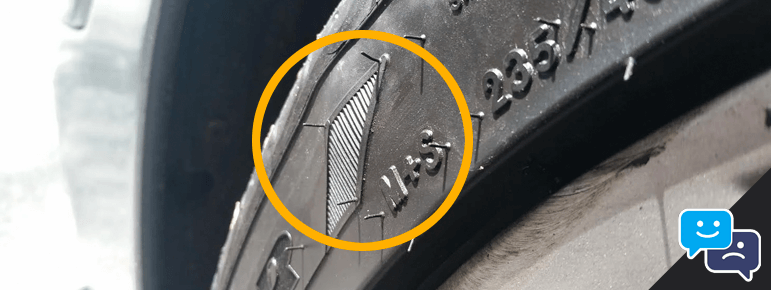Having a bubble in your tire may seem like a minor issue, but it can actually lead to serious consequences if not addressed promptly.
A bubble in a tire indicates internal damage to the tire. This can be caused by factors like impact, manufacturing defects, overloading, or underinflation. It is important to address this issue promptly as it weakens the tire’s structure and increases the risk of a blowout, especially at high speeds.
Truth is, determining if something such as a bubble as just a small cosmetic problem, or a warning sign can be difficult. However, when it comes to bubbles in tires, taking action immediately is important for maintaining your safety on the road.
In this guide, we will explore the causes of tire bubbles, discuss why it’s important to take immediate action, and highlight safety considerations.
We will also provide steps to quickly fix the issue and prevent its re-occurrence. So if you notice a swelling in your tire, here’s what you need to know.
What Causes a Bubble in a Tire?
A bubble in your tire is typically caused by a weakened spot in the tire’s sidewall or tread. The most common cause is an impact with a pothole, curb, or other similar road hazards.
Simply put, when your tire hits a sharp object or experiences a sudden impact, it can create a small rupture or separation within the tire’s layers. This leads to the formation of a bubble.
However, the specific location of the bubble is determined by which layer was affected. With that said, the most common location for a tire bubble is usually on the sidewall of the tire.
The sidewall is the area that extends from the bead (where the tire contacts the rim) to the tread area. Fact is, this is the part of the tire that is most flexible and naturally most susceptible to damage.
Why Should I Take Immediate Action When Noticing a Bubble in my Tire?
Ignoring a bubble in your tire can have serious consequences. Fact is, it compromises your safety on the road. And if the protrusion grows, the structural integrity of the tire weakens. This increases the risk of a sudden blowout.
This can be especially dangerous at high speeds or in challenging driving conditions. Secondly, a tire blowout can lead to loss of control of your vehicle, potentially resulting in accidents, injuries, or even fatalities.
Lastly, driving on a tire with a bulge can cause further damage to the tire and other components of your vehicle, leading to additional expenses down the line.
Is it Safe to Drive on a Tire With a Bubble?
Generally, no it’s not safe. Your safety should always be a top priority, which is why it’s crucial to address a bubble in your tire as soon as possible.
If you notice a bubble, avoid driving on it as much as possible. Instead, park your vehicle in a safe location and inspect the tire thoroughly. If you believe the bubble is severe, or if you’re unsure about its severity, replace the wheel with the bubble in the tire with a spare tire.
Then, take the tire to the local tire shop or dealership for inspection.
How Long Can I Drive With a Bubble on my Tire?
When you notice a bubble on your tire, it’s important to stop driving the vehicle. This bubble indicates that the tire’s inside parts are damaged, and could easily cause you to lose control of the car or experience a flat tire.
Will a Bubble in a Tire Pop?
Yes, a bubble in a tire can pop if it experiences too much pressure or stress. Bubbles weaken the tire and can expand over time. When the pressure becomes too much for the bubble to handle, it may burst, causing a flat tire.
Can a Tire Bubble be Repaired?
No, once there’s a bubble in the tire tread or sidewall, there’s no way to repair the tire, and it must be replaced.
What to Do When You Can’t Identify the Cause of the Bubble in Your Tire
In some cases, it may be difficult to pinpoint the exact cause of the bubble in your tire. For example, most causes for a bubble in the sidewall of a tire is due to impact. But, a defect in a car’s wheel can also potentially cause a tire bubble.
Consider visiting a tire specialist or an automotive service center to thoroughly inspect your tire. The only way to identify the underlying issue is to remove the tire and inspect both the rim and tire.
Remember, a professional opinion is invaluable when it comes to ensuring your safety on the road.
Can I Replace Just One Tire?
Yes, only if your tires are relatively new, then you might be able to replace only one or two tires.
However, if your tires have worn down significantly, resulting in a difference of more than 4/32″ compared to the new tire, it’s recommended to replace all four at the same time.
Can a Bubble be Caused by a Tire Defect?
Yes, some tire bubbles can be caused by manufacturing defects. Defects such as in the bonding between layers or issues with the curing process, which create weak spots or irregularities, leading to bubble formation.
Do Tire Warranties Cover Bubbles?
This depends on if the bubble is caused by a manufacturing defect. If so, yes your tire warranty should cover the replacement or partially discounted replacement of the faulty tire.
Nevertheless, it is not guaranteed that the bubble is solely the fault of the tire manufacturer.
How Much Will It Cost to Fix Bubble in Tire?
Bubbles cannot be fixed, but your tire warranty may cover some of the cost. For instance, if there’s a manufacturing defect, the tire manufacturer may replace the tire for free.
However, if the bubble is due to road hazard or improper maintenance, you will have to pay out of pocket for the new tire. Or, if you have a road hazard warranty, then you may be eligible for a free replacement.
Always a good idea to consider buying road hazard insurance to minimize expenses. This is especially true if you drive a lot of miles for work.
Understanding the Benefits of Routine Tire Inspection and Maintenance
Fact is, preventing tire bubbles starts with regular tire inspection and maintenance. By inspecting your tires regularly, you can catch any signs of damage or irregularities early on.
Look for bulges, cuts, or other deformities in the tire sidewall or tread. Additionally, maintaining proper tire pressure, rotating your tires regularly, and ensuring proper wheel alignment can also contribute to preventing tire bubbles.
When the temperature drops, the air pressure inside a tire can decrease. This phenomenon occurs because the air inside the tire contracts as it cools down, leading to a decrease in pressure.
The exact amount of air pressure loss will depend on various factors, including the initial air pressure, the temperature change, and the specific characteristics of the tire.
However, keep in mind that for every 10 degrees Fahrenheit (or 5.6 degrees Celsius) drop in temperature, tire pressure can decrease by approximately 1 to 2 pounds per square inch (psi).
Regular maintenance not only helps you avoid dangerous situations on the road but also extends the lifespan of your tires, saving you money in the long run.
Final Thoughts
A bubble in your tire may appear insignificant at first, but it can have severe consequences if left unaddressed. Taking immediate action when you notice a bubble is import for your safety and the longevity of your tires.
Remember to prioritize safety, seek professional advice if needed, and regularly inspect and maintain your tires.
By doing so, you’ll not only ensure a smoother and safer driving experience but also save yourself from unnecessary expenses and potential accidents down the road.
Stay proactive, and keep your tires properly inflated.

Managing Editor
Christopher is an automotive technical writer. When he’s not at the local autocross event, he can often be found working on one of his cars. Specializes in automotive class action law, industry trends, and automotive maintenance. Email me direct, or learn more about us

